Setting the Stage for the Chitlin’ Circuit: Thibodaux History and Culture

Hannah Robert and Jennifer Marts podcast editor & staff Thibodaux, Louisiana, formed as a trading post between New Orleans and Bayou Teche in the late 1700s. This area, rich in cultural traditions, was a melting pot of races and nationalities. It was this mix of African, French, Spanish and Creole cultures that made South Louisiana a rich backdrop for innovative music, according to Curtis Johnson’s Glimpses of Black Life Along Bayou Lafourche. Today, Thibodaux is a modern college town, but in the 1940s and 1950s it was segregated. While this division caused much pain, it also paved the way for this small city to cultivate and protect a new sound being explored by Black musicians, according to Johnson’s book. Thibodaux, with its location between Baton Rouge and New Orleans, became an easy and welcoming stop along the Chitlin’ Circuit, a series of venues for Black performers. “Everybody wanted to play in Thibodaux because if you played Thibodaux, you were the top of the line.” Bobby Rush, a Louisiana blues musician who has won three Grammys and is called the “King of the Chitlin’ Circuit” The rich Black culture and community of Thibodaux fostered the musicians on the Circuit. In the community, Black children in Thibodaux attended C.M. Washington High School, the only Black primary and secondary school in the area. Pioneered and named for Cordelia Matthews Washington, the school opened in 1902. “I had to make a round trip of 70 miles a day because I decided I wanted a high school education,” says Marilyn Marts, a Larose South Lafourche native. “It was such a long trip to and from school, I tried to do some of my work on the bus.” While the school was segregated, it was known for excellence. “In each of her students, Mrs. Washington inspired a sense of pride and commitment to service,” says Ronnie Winston, a Thibodaux police officer who attended C.M. Washington High school and was quoted in Glimpses of Black Life Along Bayou Lafourche. “We felt like it was a family, it wasn’t just like going to school. She made you feel like you were part of something. She encouraged us to excel. She encouraged people to do the best they can.” Thibodaux also boasted a vibrant spiritual community, from which the songs and music developed. Churches like Allen Chapel, Calvary United Methodist, Moses Baptist and St. Luke Catholic Church created opportunities for the Black community to commune and enjoy music like gospel, jazz and the blues together. In Spirituals and The Blues, African American theologian James Cone says “…the blues and the spirituals flow from the same bedrock of experience, and neither is an adequate interpretation of Black life without the other.” Margie Scoby, a local historian, founded the Finding Our Roots African American History Museum to preserve and share these stories and history. “We all have the blues one time or another. They [Chitlin’ Circuit performers] just knew how to convert it into a song.” Margie Scoby Carlie Dalgo staff designer
Recreating the Circuit: Stark Field
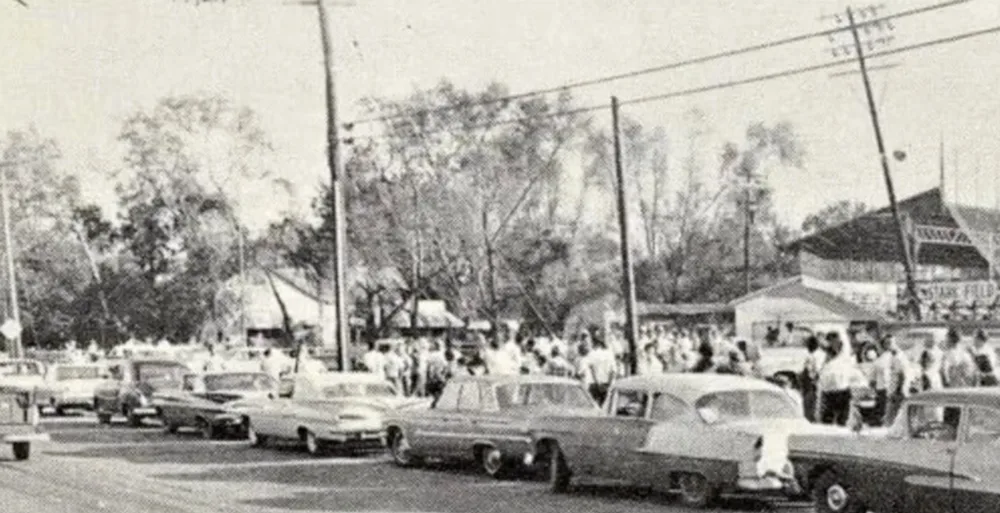
jaci remondet staff
Louisiana Native Chitlin’ Circuit Performers
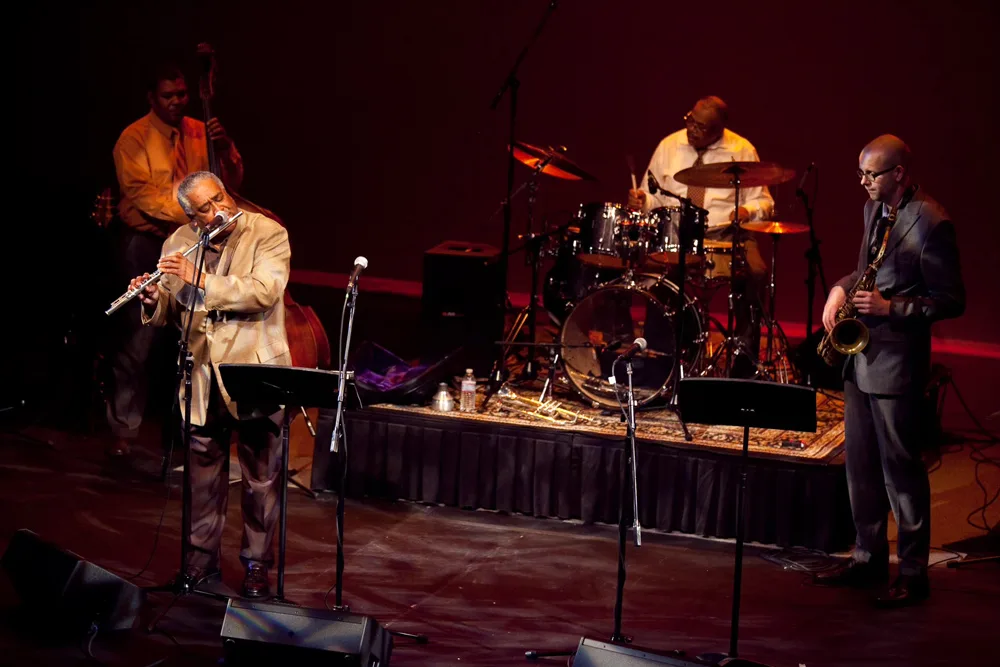
“No other place has contributed a richer heritage of pop music to the rest of the United States, from Dixieland [jazz] to rock n’ roll to contemporary jazz.” Grace Lichtenstein and Laura Dankner, in their book “Musical Gumbo: The Music of New Orleans.” sarah kraemer features editor Louisiana and its towns are home to many Chitlin’ Circuit performers, from “King of the Chitlin’ Circuit,” Bobby Rush, to Fats Domino—a pioneer of rock n’ roll music known for “Ain’t That A Shame.” Bobby Rush “King of the Chitlin Circuit,” Bobby Rush, was born in Homer, Louisiana, in 1933. Rush has won three Grammys for his music, but before the success, Rush says he was barely surviving and working gig to gig on the circuit. The hard times encouraged Rush to keep going. He says he’s written over 400 songs and still creates music while performing across the country. “He draws people in, whether it’s an arena of 15,000 to 20,000 people or it’s a small theater,” says Rush’s Manager Jeff Delia. Rush says he loves smaller venues because he can reach out to the audience, and the 93-year-old says he isn’t stopping anytime soon. Fats Domino Fats Domino, also known as Antonio Dominique Domino Jr., was born in New Orleans in 1928. His uncle taught him to play music, and Domino recorded his first song at 21 years old called “The Fat Man,” according to “Musical Gumbo: The Music of New Orleans.” “‘The Fat Man’ had hooks that grabbed hold of listeners in an instant and wouldn’t let them sit still. It was a sound that with a little modification would soon sweep the nation, whites, as well as blacks, under the banner of rock n’ roll,” says Grace Lichtenstein and Laura Dankner, in their book “Musical Gumbo: The Music of New Orleans.” Domino would go on to sell over 65 million records and produce 25 gold singles, according to his website. He died at 87 years old in 2017 due to natural causes. Thaddeus Richard Thibodaux native Thaddeus Richard, born in 1950, performed with Paul McCartney and Wings for about five years. He comes from a family of musicians, including his father Renald Richard—who co-wrote “I Got A Woman” with Ray Charles—and he’s known for being a multi-instrumental musician. “I’m convinced if you locked Thaddeus in a room with any instrument, he could master it in no time,” according to Ben Jaffe, creative director of a New Orleans nightclub called Preservation Hall, in “Preservation Hall.” Eve Abrams wrote “Preservation Hall,”—a book inspired by the Preservation Hall nightclub—by interviewing musicians who played there. Richard celebrated his 73rd birthday at the Thibodaux Wellness Center with a live musical performance, according to Houma Today. Roy Brown Roy Brown grew up in Eunice, Louisiana, and returned to Louisiana in 1947 after moving throughout the country. Brown made his first profit on music at the Dew Drop Inn when he sang “Good Rockin’ Tonight” into the payphone, according to “The Chitlin Circuit: And The Road To Rock n’ Roll” author Preston Lauterbach. The Kinder native died in 1981 of a heart attack at the age of 55. Overall These artists and many others, like Allen Toussaint, an R&B artist from Gert Town, and Tut Washingtona, a self-taught blues pianist from New Orleans, flow together like a rich Louisiana bayou as their musical innovations continue to influence the ever-growing music industry. As Bobby Rush’s manager DeLia says, “The music that’s come out of New Orleans over the last 100 years…Millions upon millions upon millions of people have gone on to listen, to buy, to stream and to be influenced by this music.” https://youtu.be/DQC0hU1fCLo Allen Toussaint Singing in the 80s Bobby Rush in Baltimore, Maryland Bobby Rush Performing at the 2010 Chicago Blues Festival Bobby Rush Playing in Thibodaux “The Biggest Show of Stars For ’57” Concert in Edmonton, Alberta Fats Domino in Amsterdam in 1962 Fats Domino Singing “Blueberry Hill” on the “Alan Freed Show” in 1956 Leroy Martin at KTIB Radio Station Leroy Martin Performing Leroy Martin (far right) Performing in a band Teddy Standing Outside His Joint Teddy DJing for the restaurant of his personal collection of nicknacks Teddy in formal wear standing next to the front door of the joint Thaddeus Richard playing at a Jazz Event Thaddeus Richard playing the piano Roy Brown
The Chitlin’ Circuit: a Foundation for Current Musicians
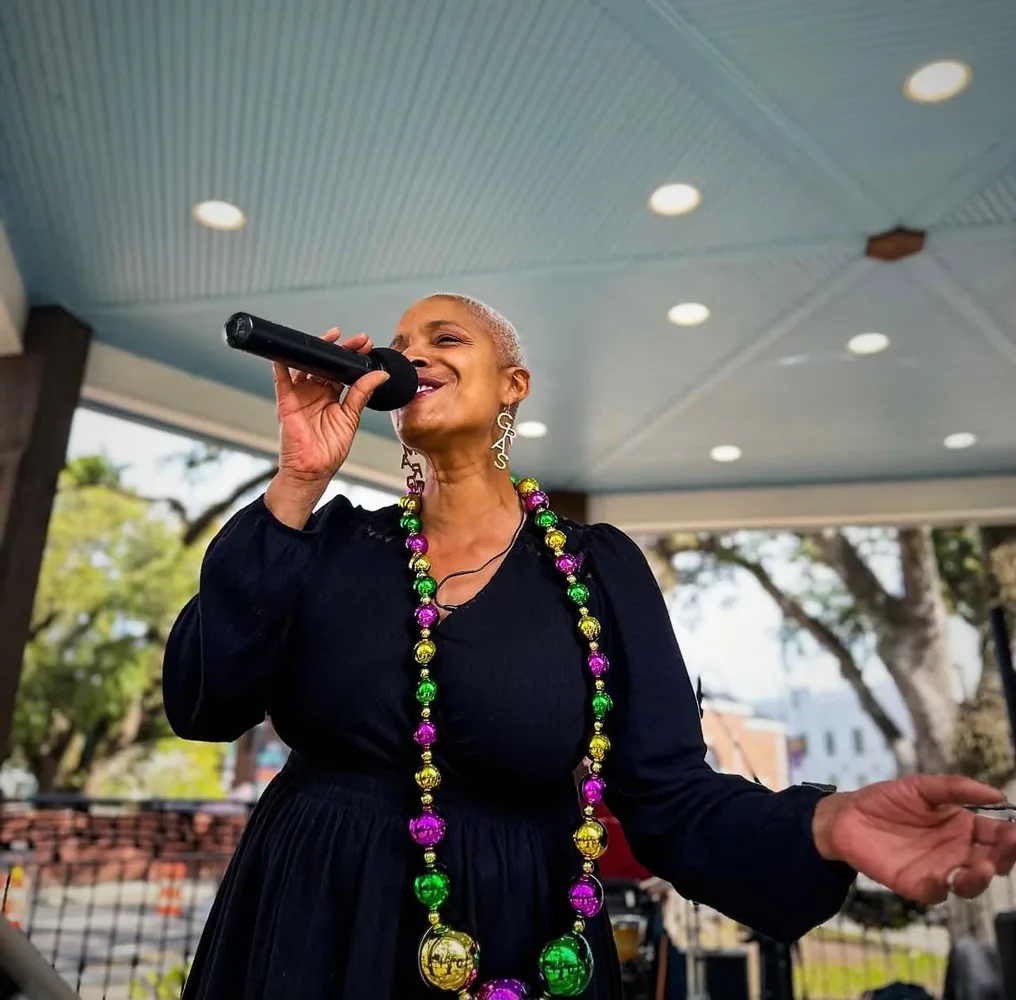
carlie dalgo staff One thing people all share in common is their ability to communicate through music. The harmonies ringing from a group of singers, the bass line thumping, the pounding beat of the drum – it’s all a universal language. While the Chitlin’ Circuit gave Black musicians a platform to express themselves during segregation, it also provided the inspiration and foundation for modern musicians. “My grandmother exposed me to Tina Turner as a young child. I was greatly influenced by this experience and so many others,” says Angela Jones, a local singer in Thibodaux, Louisiana. Jones is a music teacher in Thibodaux and Raceland and the lead singer of her band, We & Mrs. Jones. Jones has used many soul artists from the circuit as inspiration for her music career today. Artists like Aretha Franklin, Bebe King and Jimi Hendrix have set the bar high for musicians today. “Known as the “Queen of Soul,” Aretha Franklin placed 20 singles atop Billboard’s Hot R&B/Hip-Hop Songs chart during a career that began in the ’50s and lasted until her death in 2018,” according to Billboard Charts. Genres of the circuit mainly included blues, jazz, R&B and rock n’ roll. Even artists who are well-versed in other genres, such as pop or country, are still impacted by the voices of the circuit. “I started to play some of their stuff to help me branch out, because when I realized how hard their music actually was and how groovy it was, it forced me to be a better musician and singer.” Evy Vining, a local musician in Thibodaux, Louisiana Vining has led worship at different churches for many years. The skills of musicians from the circuit have pushed him to advance his musicianship. While future generations will only hear stories of music in the 1930s-1960s, past generations have immersed themselves in it. Tina Turner’s song, “Proud Mary,” shares a message of leaving the painful things behind and chasing after a more meaningful life. Local drummer Rogers George experienced Hosea Hill’s Sugar Bowl firsthand. George learned how to play the drums from his older brothers at the Sugar Bowl. Growing up performing shaped who he is today. “We did carnival balls, carnival dances for clubs and fairs that the fire departments had,” says George. “We played for a lot of weddings, parties, all over Houma-Thibodaux.” Some were there to experience the sounds and talent of the circuit. Others are living vicariously through their grandparents and the stories they tell. People change over time, but one thing that will never change is the power of music. Artists of the Chitlin’ Circuit have paved the way for musicians to chase after their dreams and inspire future generations. Honoring the Circuit: Blue Eyed Soul Angela Jones is the lead singer of “We and Mrs. Jones” a three-piece band in South Louisiana that plays a variety of styles and decades of music Angela Jones performs with her band, “We and Mrs. Jones,” in Downtown Houma on the Bandstand for Mardi Gras 2024 Angela Jones Playing at The Louisiana Blackberry Festival in Houma Evy Vining leads worship at a local church in Raceland, Louisiana in 2020 Rogers George, a former musician, plays at Sand’s Club in New Orleans, Louisiana
Odd Fellows Hall
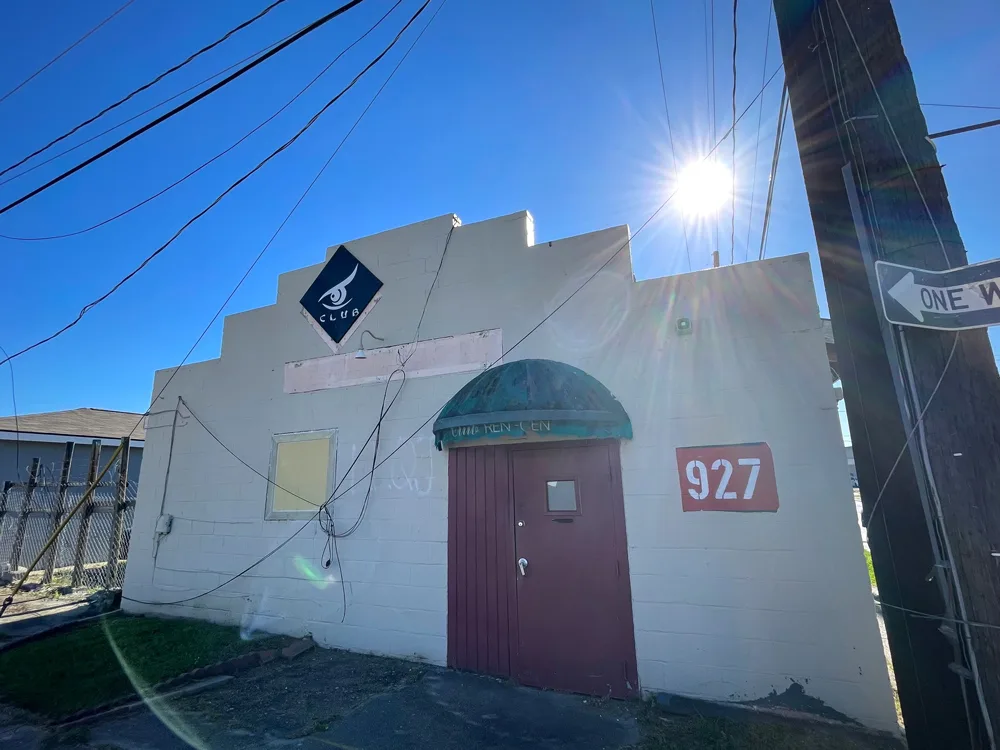
skylar neal staff Fifteen miles south of Thibodaux, the Odd Fellows Hall in Houma echoed with the dynamic performances of Chitlin’ Circuit artists through the night. In the 1930s-1970s, Guitar Slim, Joe Tex and Ike and Tina Turner performed in Houma, Louisiana, at the Odd Fellows Hall, a venue along the Chitlin’ Circuit. Located at 915 Canal Street, The Odd Fellows hall stood between two historic bars: The 45 on the right and Sanko’s on the left. Part of the Odd Fellows Hall building still stands today between Vida Paint & Supply Inc. and The Eye Club. The hall was located in Houma’s “red-light district,” an area where many Blacks lived. The area, known as the “Back of Town,” extended from Canal Street to Grinage Street. Just as other Chitlin’ Circuit venues had managers, Houma’s manager was Irvin Picou. Picou signed band contracts and scheduled performances for the hall. In addition to being the Hall manager, he worked as a porter at various locations in Houma, including on a train that ran through Shriever’s railroad. Alma Scott, a former resident of the Odd Fellows Hall, remembers living there and seeing Ike and Tina Turner, Guitar Slim and other artists perform. Scott says the Odd Fellows Hall was a two-story building with ten rooms on the first floor where people and performers could live or stay and a dance hall on the top floor where performers could play. To the building’s left was a porch with stairs leading to the dance hall. Scott and the other children could not enter the hall when adults were present because of the presence of alcoholic beverages. Instead, they would watch from outside. “We could go up the back steps, and there was a big fan that was there that would cool the place off, and we could look through the fan and into the door, and oh boy, it was wonderful,” says Scott. Houma resident Martha Turner remembers the Odd Fellows Hall from her childhood in Houma, though she was too young to enter the hall at the time. “When any groups or celebrities came in [to Houma], it was always held at the Odd Fellows Hall, because that was the biggest place in Houma that you could have anything like that,” she says. Alvin Tillman, a local Houma Chitlin’ Circuit historian, says Houma was a happening place. “That particular area of Lafayette Street, and the Barataria – Canal Street area where the Odd Fellows hall was located, it was like our Bourbon Street. Just about anything you can think of was found in that particular area.” Alvin Tillman Like Bourbon Street, Houma’s Canal Street thrived with activity, and The Odd Fellows Hall was the heart of it all. Canal St. in Houma which was the location of Odd Fellows Hall from the 1930s to 1970s These are the remains of what was the Odd Fellow Hall Landmark of Downtown Houma The street view of the Odd Fellows Hall (left), The 45’s Apartment Building (middle) and The 45 bar (right) Was The 45 bar on Canal Street The Space Between what’s left of Odd Fellows Hall and The 45 Bar Apartment Building
The Sounds of Thibodaux
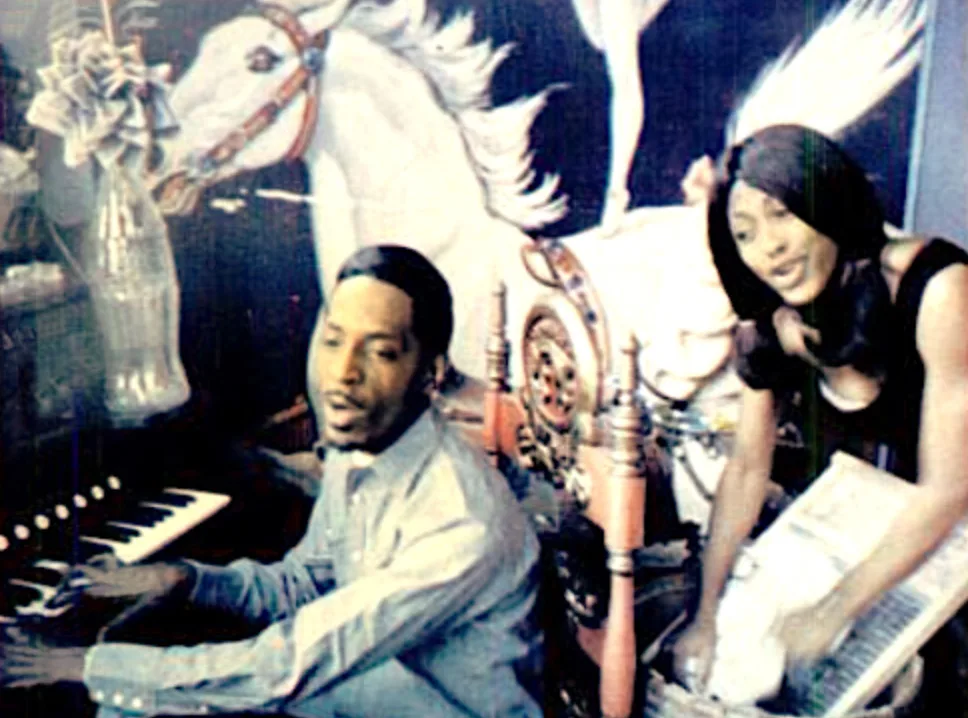
sally-anne torres staff Filled with the sounds of blues, rock ‘n’ roll, jazz and more, Thibodaux was the perfect stop for roaming musicians and entertainers traveling along the Chitlin’ Circuit. James Brown James Brown, originally from Georgia, was a significant figure on the Chitlin’ Circuit, according to Scott Barretta, music historian for the Mississippi Blues Trail. Brown initially filled in for Little Richard on tour, but his big break came when he joined the Famous Flames vocal group, according to the book “The Chitlin’ Circuit and the Road to Rock ‘N’ Roll.” Brown’s performances were in high demand. Rachel Dangermond, director at 100 Men Hall, says that in Mississippi and parts of Louisiana, he charged $1.50 for a show, but his admission fee was $4 in New York. When Brown left 100 Men Hall, he went through New Orleans and down into Thibodaux, according to Dangermond. Brown worked most, if not every night. “He had a large band and needed to work every night,” Beretta says. Fats Domino Fats Domino, the youngest of nine children, was born in the Ninth Ward of New Orleans. He achieved his breakthrough with the song “The Fat Man,” a track described in “Music Gumbo: The Music of New Orleans” as innovative. Domino blended his Creole accent with a distinctive “boogie-woogie” piano style, and his music reached Black and white audiences, according to “Music Gumbo.” He would have traveled through Thibodaux in the late 50s and early 60s, according to “Music Gumbo.” Domino plays the fastest-paced songs with a calm and collected demeanor, according to a project called “In the Style of Fats Domino” at the University of Maryland Library. Guitar Slim Guitar Slim, also known as Eddie Jones, was a musician ahead of his time. He was born in Mississippi and labored in cotton fields before becoming a renowned performer. “Slim was one of the real pioneers of rock and roll,” says Preston Lauterbach, author of “The Chitlin Circuit and the Road to Rock ‘N’ Roll.” Guitar Slim’s captivating style and stage presence are unmistakable. His son, Guitar Slim Jr., recalls how he would dye his hair to complement his outfits for performances. Guitar Slim’s shows at the Sugar Bowl are likely the most notable in the Thibodaux area. “He was one of the first people to go out in the crowd with a 100-foot cord. He was a very dramatic showman.” Scott Beretta Slim died in New York at the age of 32. His manager, Hosea Hill, brought Slim to Thibodaux and buried him at Moses, Allen Chapel, Calvary Cemeteries. Tina Turner and Ike Turner Ike and Tina Turner performed together on the Chitlin’ Circuit. According to Lauterbach, Ike–credited as one of the creators of rock ‘n’ roll–and Tina, renowned for her iconic vocals, delivered a consistent “high-energy” performance whenever they took the stage. They ranked among the top acts on the Chitlin’ Circuit during their era, Lauterbach says. “They had what was considered the most high-energy show,” Lauterbach says. “They were all about super high-energy and pure entertainment for as many hours as they were on stage.” The author says that the Turners had a dance team called the Ikettes, their backup dancers. Tina was the lead vocalist and a dancer in the group. Both performers played at the Sugar Bowl in Thibodaux. They did solo acts along with their performances together, Lauterbach says. Baretta says Turner’s music leaned more towards a soul sound. Long after the performers had moved on to their next venues, their memories lingered in the hearts and minds of audiences for years to come. James Brown Performing in October of 2003 James Brown after Performing in Florida in January 1972 Guitar Slim Performing Guitar Slim with his Guitar Guitar Slim Featured in The Louisiana Weekly in February 1959 Ike and Tina Turner for The Midnight Special show in February 1974 Ike and Tina Turner at Schiphol in Amsterdam Ike and Tina Turner on the cover of Cash Box Magazine in June 1962 Ike and Tina Turner Performing in 1966
Chitlin’ Circuit Map

catherine clement design editor
The Circuit at a Glance



catherine clement design editor
The Music, History, and Inspiration of the Chitlin’ Circuit


jaci remondet staff A vibrant soundtrack of soulful music plays within the walls of juke joints and dance halls that make up the Chitlin Circuit. The cords play sounds of pain, joy, challenges and resilience, but these melodies are not just confined to that time and within those walls. The musical roots stem deep into history and echo throughout present-day symphonies. A web of juke joints and clubs named the Chitlin Circuit hosted African-American musicians during the Jim Crow era. Sounds of jazz, blues, and R&B filled the various venues of the circuit. Drummer Rodgers George, who learned to play on the circuit, says “Dancing Music” was his main genre. “We did music for the people that wanted to dance,” says George. “And we did dance music all of our lives so that meant you played for all ages.” Rodgers and his band didn’t play any specific genre of music but rather music that got people to dance. Blues is the foundation of the Chitin Circuit sounds and most modern musical genres. Eileen Southern says in “The Music of Black Americans: A History” that blues originated from the early days of American slavery. The slaves used it as a language. It was a way for slaves to communicate their feelings, hopes and struggles. “Through the medium of song the slaves could comment on the problems and savor the few pleasures allowed them; they could voice their despair and hopes, and assert their humanity in an environment that constantly denied their humanness.” Eileen Southern According to Southern, the songs ranged from full phrases to simple “whoops” and each one had deep meaning. Michael V. Uschan, author of “The Music Library: The History of The Blues,” says that African American pianist Ferdinand Joseph LaMothe, better known as Jelly Roll Morton, made the earliest recorded mention of the blues in 1902. In New Orleans, Morton encountered Ma Rainey, later known as the “Mother of the Blues,” singing about the struggles of providing for the man she loved while playing the piano with just three fingers. Blues heavily inspired the musical style of the Chitlin Circuit, and it continues to influence music today. In the 1950s, African Americans fused blues with gospel music from the Pentecostal Church, creating a new sound called rhythm and blues, according to the book “The History of R&B and Soul Music.” Working-class African Americans deserve credit for developing original United States musical genres inside of juke joints. “[The blues] is prevalent in all kinds of music not just jazz but rhythm and blues, country, rock, so it is still used today by musicians in a number of different genres,” says Nicholls State University music professor Jason Ladd. Jason Ladd, a Nicholls State University music professor Music historian Tom Piazza says in the book “The History of The Blue,” “[It] may be helpful to see the blues as a huge river through the middle of our culture. Almost every notable form of American music in the twentieth century is a city or a village along that river.” Though the physical form of the Chitlin Circuit no longer exists, its soul is still alive today within every song and every beat. The Chitlin’ Circuit Music: An Inspiration
It Takes A Village: Hosea Hill, Frank Painia and Deacon John Moore
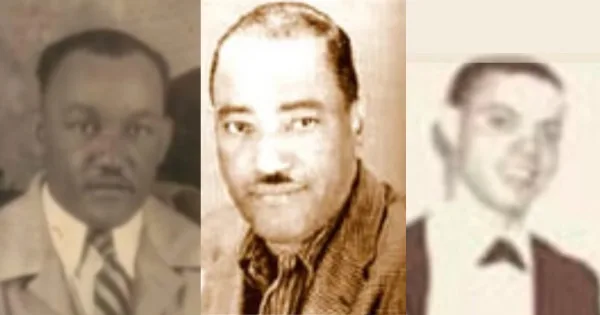

gabrielle chaisson staff The Chitlin’ Circuit was more than a gig or a venue—it allowed Black musicians and entrepreneurs to succeed in the Jim Crow era. “In the region, there was a pretty elaborate network of educated musical people in the Black community and the music gravitated from them.” Tommy Lyons, Musician But at the heart of the circuit was the people behind the musicians. People like Hosea Hill, Frank Painia and Deacon John Moore each played a part in the circuit network. Hosea Hill owned the Sugar Bowl, an exclusively Black club in Thibodaux, and managed circuit artists like Guitar Slim, Hosea Hill and the Serenaders, along with smaller artists. He also served as an entrepreneur, banker, cop, manager and father figure in his local community, says his niece Angela Watkins. “Uncle Hosea was such a generous person,” says Watkins. “When you couldn’t pay he would say, ‘Can you wash the dishes? I’ll let you in if you can wash the dishes.’ He found ways to make money and help people at the same time.” Hill had connections that brought regional attention and entertainment to the Thibodaux area. He also worked with Frank Painia, owner of the Dew Drop Inn in New Orleans, to book circuit artists, says former Hosea Hill and the Serenaders tenor saxophone player Ronald Goff. Frank Painia originally opened the Dew Drop Inn in 1939 as a barbershop. Over time, it developed into a restaurant, hotel and popular circuit venue, according to a Dew Drop Inn press release. Artists like “Ray Charles, Little Richard, Irma Thomas and Fats Domino” performed there, and it served as the birthplace of rock n’ roll, according to the Dew Drop Inn’s website. The local community viewed the Painia family as “protective, familial and paternal. They really looked out for people,” says author and music journalist Ben Sandmel. Painia violated the City of New Orleans code, ordinance number 828, and welcomed Blacks and whites to the venue, which led to multiple arrests, according to Painia v. City of New Orleans 1967 court documents. This ordinance banned the sale and consumption of alcohol to both whites and Blacks under the same roof unless separated by a “solid partition.” Painia fought against these laws after each arrest and continued welcoming all races into the Dew Drop Inn, according to “A Closer Look NOLA’s” website. Another prominent figure in the circuit was Deacon John Moore, a popular New Orleans musician, who served as the bandleader of the Dew Drop Inn’s house band in 1960 and led his own band called Deacon Moore and the Ivories, says Mississippi Blues Trail writer Scott Barretta. Moore is an accomplished musician who got his start on the circuit performing at venues like 100 Men Club and the Dew Drop Inn. He now performs at private events along the coast. “He’s only ever recorded a couple records and part of that has to do with the fact that he became the leading private party band,” says Barretta. “Deacon John is not as visible as a recording artist, but he is extremely beloved as a live performer.” Moore learned how to adapt his act over the past 50 years as music styles shifted from blues to rock n’ roll and Motown to funk, says Barretta. “He’s performed here since he was 17 years old. He [Moore] says ‘I’m the last man standing on the Chitlin’ Circuit,’” says 100 Men Hall Director Rachel Dangermond. Hill, Painia and Moore brought the Chitlin’ Circuit down to Louisiana through their clubs, connections and courage and helped shine a light on black talent. “To build a name [on the circuit], you needed to have a name behind you.” Angela Watkins
